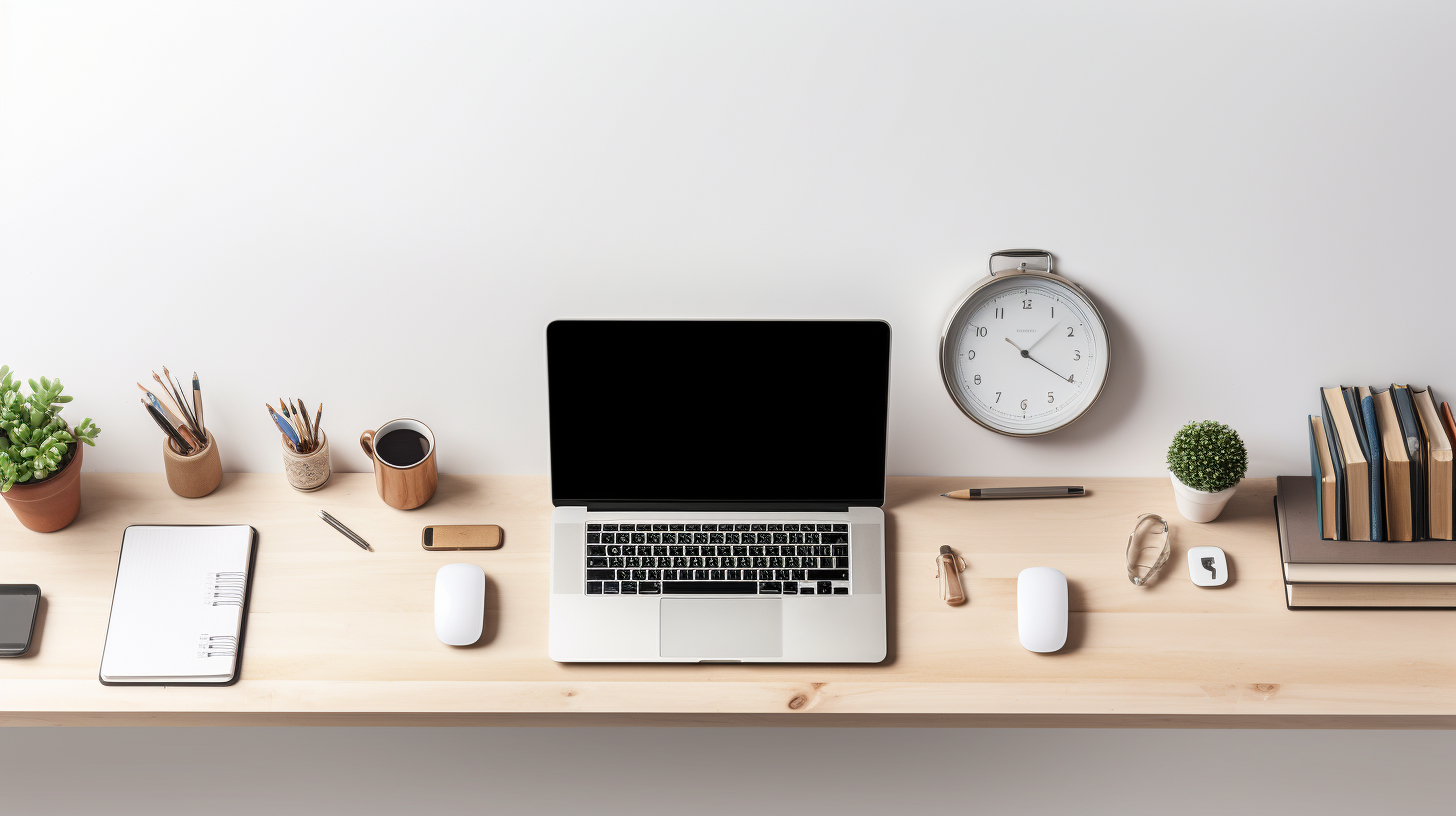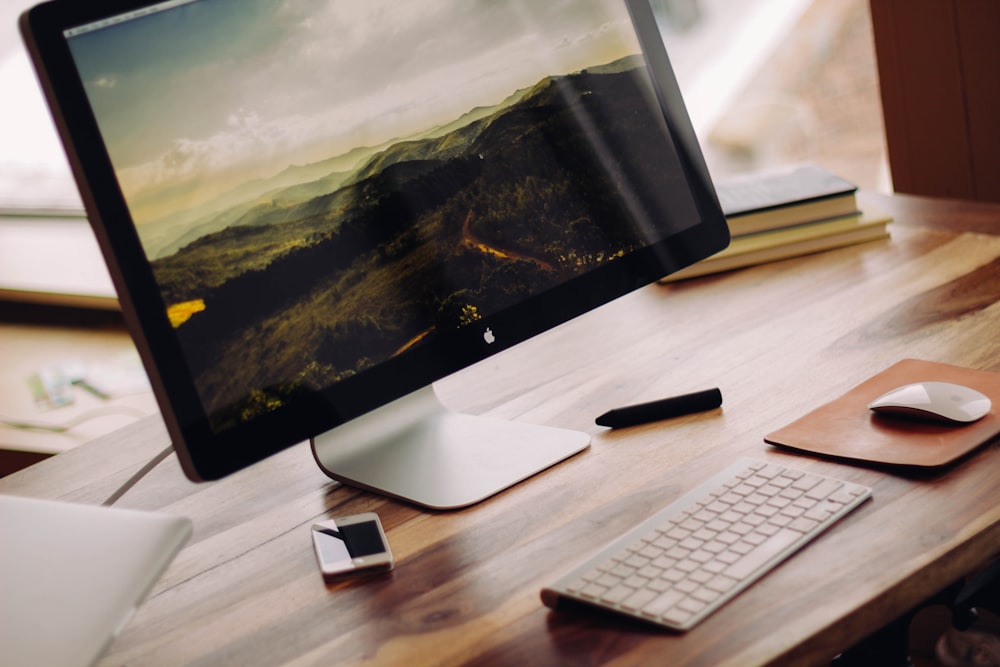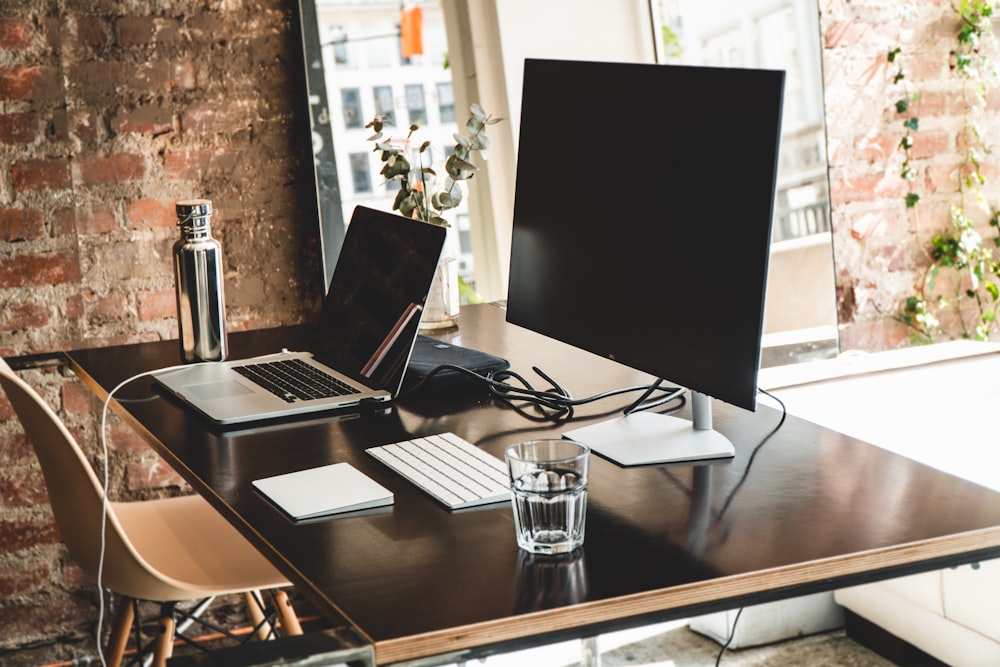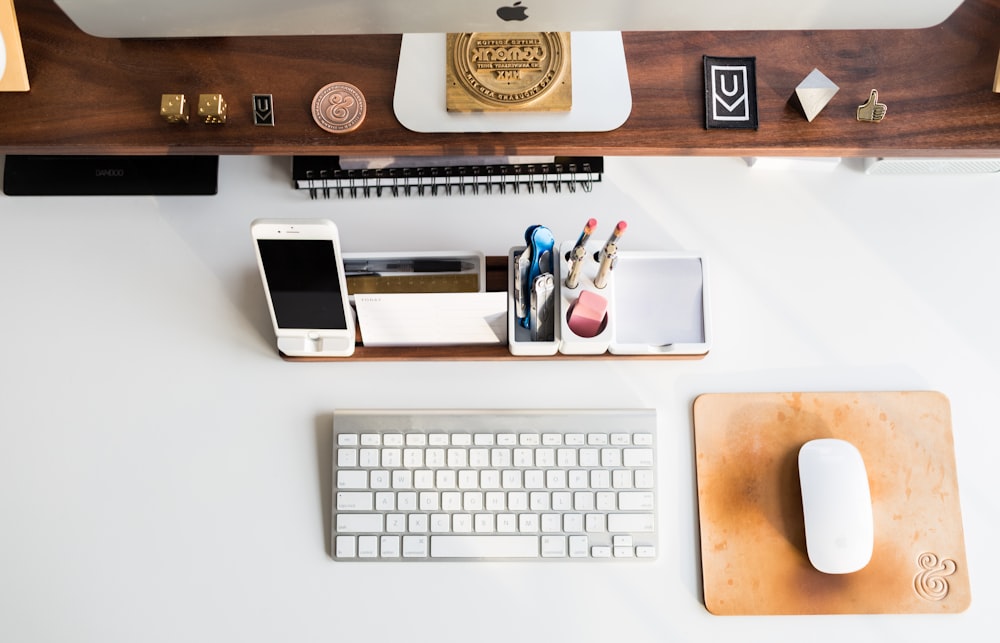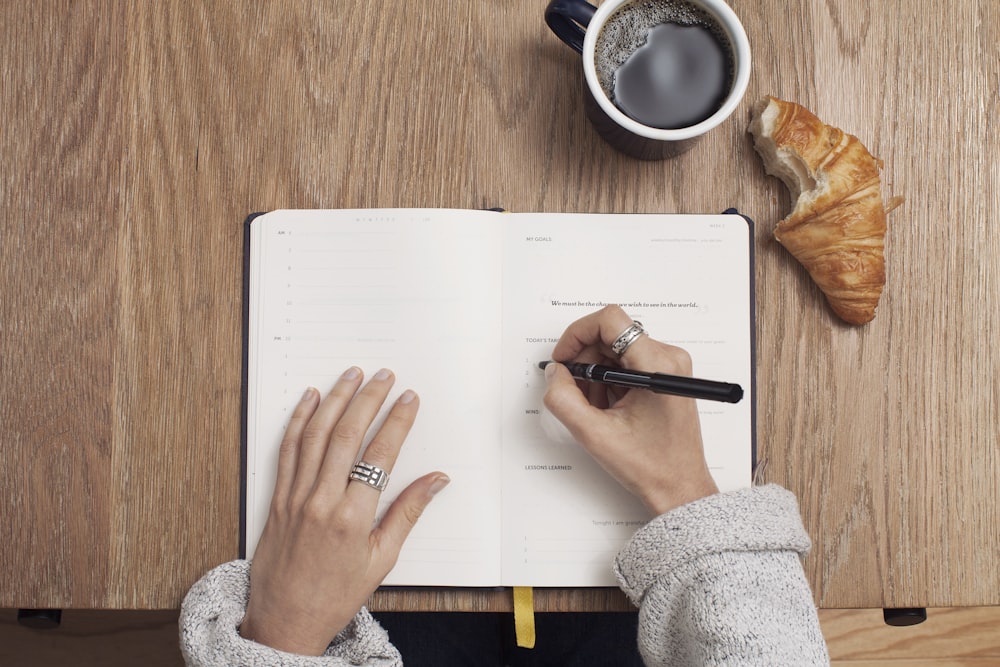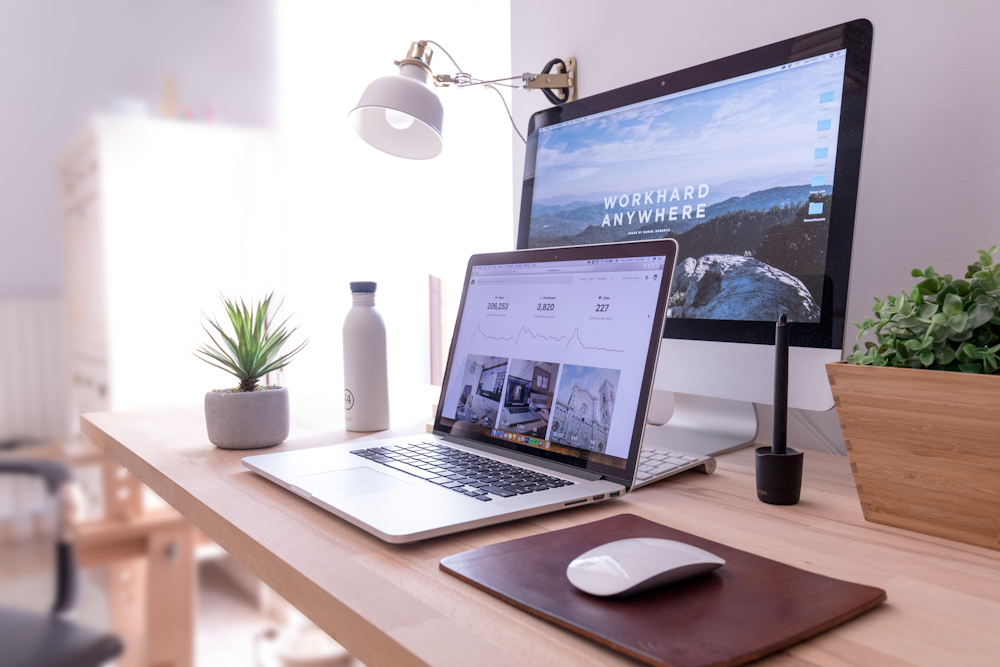Welcome to the world of minimalist workspace design! In our fast-paced and digitally-driven society, creating a serene and clutter-free workspace is more important than ever. A minimalist workspace not only promotes a sense of calm and focus but also maximizes productivity and efficiency.
Whether you work from home or in a traditional office setting, the design and organization of your workspace can have a significant impact on your ability to stay motivated, focused, and inspired. In this article, we will explore the benefits of a minimalist workspace, essential elements to incorporate, functional layout and organization tips, mindful technology use, creating a balanced work environment, productivity-boosting habits, and maintaining and evolving your minimalist workspace.
So, if you’re ready to transform your workspace into a sleek and efficient hub that will supercharge your productivity and help you achieve your goals, let’s dive right in!
Benefits of a Minimalist Workspace Design
Welcome to the world of minimalist workspaces! In a time where distractions are everywhere, creating a minimalist workspace can help you maintain focus, enhance creativity, and ultimately boost your productivity. Here are some key benefits of having a minimalist workspace:
Reduced Clutter and Distractions
One of the main advantages of a minimalist workspace is the reduction of clutter and distractions. When your workspace is free from unnecessary items, you can focus better and stay on task. A clutter-free environment promotes a clear and uncluttered mind, allowing you to think more clearly and be more productive. Say goodbye to stacks of papers, tangled cords, and piles of unnecessary items on your desk!
Improved Focus and Concentration
With fewer distractions in your workspace, you can improve your focus and concentration. A minimalist workspace eliminates visual clutter, allowing your brain to process information more efficiently. When you have a clean and organized space, you can direct your attention solely on the task at hand. This heightened focus will help you work more effectively and complete tasks in a shorter amount of time.
Enhanced Creativity and Inspiration
A minimalist workspace can also enhance your creativity and inspiration. When your workspace is clutter-free, it creates a calming and serene atmosphere that fosters creativity. With less visual noise, your mind is free to wander, imagine, and come up with innovative ideas. By keeping your workspace simple and minimal, you create an environment that promotes inspiration and encourages your creative juices to flow.
So, if you’re tired of feeling overwhelmed and distracted while working, it may be time to consider embracing the minimalist movement and reaping the benefits of a clutter-free workspace. By decluttering and simplifying your workspace, you can enjoy improved focus, enhanced productivity, and a surge in creativity.
Essential Elements of a Minimalist Workspace
When it comes to creating a minimalist workspace, there are a few key elements that can help you achieve a clean and organized environment. By incorporating these essential elements into your workspace, you can not only declutter your physical space but also enhance your productivity and focus. Let’s explore these elements in more detail:
Decluttering and Organizing
The first step in creating a minimalist workspace is to declutter and organize your belongings. Start by going through your desk, shelves, and drawers, and remove any items that are no longer necessary or serve a purpose in your work. Donate or discard these items to create more space and reduce visual clutter.
Pro tip: Use storage solutions such as bins, trays, and dividers to keep your items neatly organized. Consider implementing a “one in, one out” policy to prevent accumulation of unnecessary items in the future.
Optimal Lighting
Lighting plays a crucial role in creating a productive workspace. Natural light is ideal, as it not only brightens up the room but also boosts mood and energy levels. Position your desk near a window to maximize natural light. If natural light is limited, invest in a good desk lamp that provides sufficient illumination without causing eye strain.
Ergonomic Furniture
Investing in ergonomic furniture is essential for maintaining good posture and minimizing physical strain. Choose a comfortable chair that provides adequate support for your back and encourages proper posture. A height-adjustable desk or monitor stand can also help you find the optimal position for your screen, reducing neck and shoulder strain.
Neutral Color Palette
A minimalist workspace often incorporates a neutral color palette, such as whites, grays, and earth tones. These colors create a calm and soothing environment that promotes focus and concentration. Avoid using too many bold or distracting colors, as they can disrupt your workflow.
Plants and Natural Elements
Bringing elements of nature into your workspace can have a positive impact on your well-being and productivity. Add a few low-maintenance plants to your workspace to purify the air and create a sense of tranquility. Additionally, consider incorporating natural materials like wood or stone for a touch of warmth and earthiness.
Creating a minimalist workspace involves more than just eliminating clutter. By incorporating the essential elements mentioned above, you can create a space that is visually appealing, functional, and conducive to productivity. Remember that everyone’s preferences and needs may vary, so don’t be afraid to personalize your workspace to suit your individual style and work requirements.
Functional Layout and Organization Tips
Having a functional layout and an organized workspace is essential for maximizing productivity. When everything is in its proper place and easily accessible, you can focus more on your work and avoid unnecessary distractions. Here are some tips to help you create a functional and well-organized workspace:
Effective Desk Placement
- Position your desk near a window or a source of natural light to boost your mood and energy levels.
- Arrange your desk so that you have a clear view of the room, allowing you to stay aware of your surroundings.
- Place your computer monitor at eye level to avoid strain on your neck and eyes.
- Keep frequently used items within arm’s reach to minimize the need for constant movement.
Storage Solutions
- Invest in storage solutions like shelves, drawers, and file cabinets to keep your workspace clutter-free.
- Use labeled folders and binders to organize documents and important papers.
- Utilize desk organizers and trays to store pens, pencils, paper clips, and other small items.
- Consider using wire management solutions to keep cords and cables neatly tucked away.
Digital Organization Tools
- Use cloud storage solutions like Google Drive or Dropbox to store and access your digital files from anywhere.
- Install productivity apps and tools that help you manage tasks, deadlines, and projects efficiently.
- Utilize note-taking apps like Evernote or Microsoft OneNote to keep track of important information and ideas.
- Set up email filters and folders to automatically sort and prioritize incoming messages.
Prioritizing and Minimizing
- Determine your top priorities and focus on completing those tasks first.
- Minimize distractions by removing unnecessary items from your workspace.
- Keep your desk clear of non-essential items and only keep tools and supplies that you frequently use.
- Regularly review and evaluate your to-do list to ensure you are working on the most important tasks.
By implementing these functional layout and organization tips, you can create a workspace that promotes efficiency and productivity. Remember, a clutter-free and well-organized environment provides a clear mind to focus on your work and achieve your goals.
Also Read: Minimalist Design for Small Budgets : Tips for First-time Homeowners in 2023
Mindful Technology Use
In today’s digital age, technology plays a significant role in our lives, including our workspaces. However, the constant influx of emails, notifications, and distractions can hinder our productivity and focus. By practicing mindful technology use, we can optimize our workspace and harness the power of technology to enhance our productivity and well-being. Here are some tips to achieve a balanced and minimalist approach to technology in the workspace:
Streamlining Digital Devices
- Limit the number of devices: Instead of cluttering your workspace with multiple devices, prioritize the essentials. Consider using a laptop instead of separate desktop computers, tablets, and smartphones.
- Create a dedicated workspace: Designate a specific area for your digital devices, such as a desk or a charging station, to minimize distractions and keep them organized.
- Declutter your digital workspace: Regularly review and delete unused apps, files, and emails to maintain a clean and organized digital environment.
Managing Notifications and Distractions
- Customize notification settings: Disable unnecessary notifications and prioritize only the essential ones, such as work-related emails or calendar reminders.
- Set boundaries: Establish specific times for checking and responding to emails, messages, and social media. Avoid constantly being available and allocate dedicated time for deep focus work.
- Use focus-boosting apps: Consider installing apps that help manage and minimize distractions, such as website blockers or focus timers like Forest or Pomodoro.
Embracing Minimalist Apps and Tools
- Simplify your apps: Minimize the number of apps you use by choosing multi-functional tools that can perform multiple tasks. For example, instead of using separate note-taking, task management, and calendar apps, opt for an all-in-one productivity tool.
- Utilize cloud storage: Store your files and documents in the cloud, which allows access from any device while reducing the need for physical storage space.
- Explore minimalist productivity tools: Experiment with minimalist productivity tools that promote focus, organization, and collaboration. Examples include Trello for project management, Evernote for note-taking, and Slack for team communication.
By adopting a mindful approach to technology use, you can transform your workspace into a streamlined and distraction-free environment that enhances your productivity. Remember to regularly review and assess your digital habits to ensure they align with your goals and values. Embrace technology as a tool to support your work and well-being, rather than allowing it to control your focus and attention.
“Technology is just a tool. In terms of getting the kids working together and motivating them, the teacher is the most important.” – Bill Gates
Creating a Balanced Work Environment
Creating a balanced work environment is essential for maintaining productivity and overall well-being. When your workspace is well-balanced, it not only enhances your ability to focus and be productive, but it also promotes a healthy work-life balance. Here are some tips to help you create a balanced work environment in your minimalist workspace:
Incorporating Natural Elements
- Plants: Adding plants to your workspace can have a positive impact on your mood and productivity. They not only add visual appeal to your space but also improve air quality and reduce stress levels.
- Natural Light: Utilize natural light as much as possible by positioning your desk near a window. Natural light can boost your mood, increase productivity, and help regulate your body’s natural circadian rhythm.
- Nature Inspired Decor: Use nature-inspired elements, such as artwork, photographs, or objects, to create a calming and serene atmosphere in your workspace.
Promoting a Healthy Work-Life Balance
- Set Boundaries: Establish boundaries between your work and personal life. Define specific working hours and stick to them. Avoid bringing work into your personal space or taking personal calls during work hours.
- Take Breaks: Incorporate regular breaks into your work schedule. Get up and stretch, walk around, or engage in quick mindfulness exercises. Stepping away from your desk can help refresh your mind and avoid burnout.
- Separate Workspace: If possible, designate a separate area for work that is physically separated from your living space. This separation helps create a clear distinction between work and relaxation, reducing the temptation to work outside of designated hours.
Personalized Inspirational Space
- Art and Inspiration: Surround yourself with art or objects that inspire you. They can be motivational quotes, images, or items that reflect your interests and aspirations. These personal touches can serve as a source of inspiration and motivation during long work hours.
- Comfort and Ergonomics: Invest in comfortable and ergonomic furniture that supports good posture and reduces physical strain. A well-designed workspace enhances both comfort and productivity.
- Noise Control: Minimize noise distractions by incorporating noise-cancelling headphones or adding soft furnishings like rugs or curtains to absorb sound.
By creating a balanced work environment, you can enhance your overall well-being and productivity. Remember to adapt these tips to suit your individual needs and preferences. Building a workspace that promotes a healthy work-life balance will not only benefit your productivity but also contribute to your overall happiness and satisfaction.
Productivity Boosting Habits
When it comes to maximizing productivity in your minimalist workspace, it’s not just about the physical environment. Developing effective habits and routines can significantly enhance your focus and efficiency. Here are some productivity-boosting habits that will help you make the most of your minimalist workspace:
Establishing a Daily Routine
Creating a consistent daily routine can provide structure and help you stay on track. Dedicate specific times for work-related tasks, breaks, and personal activities. By following a routine, you’ll train your brain to be more focused and productive during designated work hours.
Setting Clear Goals
Setting clear goals is essential for staying motivated and maintaining productivity. Break down larger tasks into smaller, actionable steps and set deadlines for each one. This approach will help you stay organized and focused on accomplishing your goals.
Practicing Mindfulness and Breaks
Taking regular breaks throughout the day can actually boost your productivity. It allows your mind to rest and recharge, preventing burnout and improving creativity. Incorporate mindfulness techniques such as deep breathing or meditation during your breaks to clear your mind and increase mental clarity.
Regular Physical Activity
Engaging in regular physical activity has been proven to increase productivity. Exercise helps reduce stress, improve focus, and enhance cognitive function. Incorporate activities such as stretching, walking, or even a quick workout session into your daily routine to keep your energy levels up.
Healthy Eating Habits
Proper nutrition plays a significant role in productivity. Avoid heavy, processed foods that can cause sluggishness and opt for nutrient-rich meals and snacks instead. Fueling your body with the right foods will provide sustained energy levels and mental clarity throughout the day.
By incorporating these productivity-boosting habits into your daily routine, you’ll be able to make the most of your minimalist workspace and achieve your goals more efficiently. Remember, consistency is key, so stick to your chosen habits and give them time to become second nature. With dedication and the right mindset, you’ll see a significant improvement in your overall productivity.
Maintaining and Evolving Your Minimalist Workspace
Once you have created your minimalist workspace, it’s important to maintain and evolve it to ensure it continues to serve your needs and promote productivity. Here are some tips to help you keep your minimalist workspace in top shape:
Regular Cleaning and Maintenance
- Set aside time each week or month to declutter and clean your workspace.
- Remove any items that have accumulated and no longer serve a purpose.
- Dust and wipe down your desk, furniture, and equipment regularly to keep everything looking fresh and clean.
- Keep your workspace organized by returning items to their designated places after each use.
Adapting to Changing Needs
- As your work evolves or your needs change, be open to adjusting your minimalist workspace accordingly.
- Consider how your workspace can best support your current work tasks and adjust the layout or organization as needed.
- Don’t be afraid to remove or add elements to your workspace if they no longer serve a purpose or if you find something new that can enhance your productivity.
Ongoing Evaluation and Optimization
- Continuously evaluate the effectiveness of your minimalist workspace and make improvements accordingly.
- Pay attention to how it’s impacting your productivity, focus, and overall well-being.
- Experiment with different setups, lighting options, or organizational systems to find what works best for you.
- Stay open to trying new strategies or incorporating feedback from colleagues or friends who have visited your workspace.
By regularly maintaining and evolving your minimalist workspace, you can ensure that it remains a productive and inspiring environment. With a little effort and attention, you can continue to reap the benefits of a clutter-free and focused work area.
Also Read: Minimalist Lighting Ideas in 2023 : Creating Ambiance with Simple Fixtures
Conclusion
In conclusion, creating a minimalist workspace can greatly enhance your productivity and overall well-being. By reducing clutter and distractions, optimizing lighting, and incorporating elements of nature, you can create a work environment that promotes focus, creativity, and inspiration. Additionally, implementing functional layout and organization tips, practicing mindful technology use, and establishing productivity-boosting habits can further maximize your efficiency and success.
Remember, maintaining and evolving your minimalist workspace is crucial for long-term productivity. Regular cleaning and maintenance, adapting to changing needs, and ongoing evaluation and optimization are essential steps to ensure your workspace remains clutter-free and conducive to work.
By making intentional choices and designing a workspace that aligns with your minimalist aesthetic, you can create a calming and clutter-free area that enhances your focus and creativity. So go ahead and transform your workspace into a minimalist sanctuary where you can thrive and accomplish your goals with ease.
Are you ready to create a minimalist workspace that maximizes your productivity? Check out Minimalist Home Guru’s collection of sleek and functional workspace essentials to make your vision a reality.
Frequently Asked Questions
- What is minimalist workspace design?Minimalist workspace design is a concept that focuses on simplicity, decluttering, and organization to create an environment that promotes productivity, reduces distractions, and enhances focus.
- Why is minimalist workspace design important for productivity?Minimalist workspace design is important for productivity as it helps minimize visual distractions, reduces clutter, and creates a calming environment that allows individuals to focus better, think creatively, and work efficiently.
- What are some key elements of minimalist workspace design?Some key elements of minimalist workspace design include decluttering and organizing the workspace, using neutral colors and minimal decor, having sufficient lighting, incorporating ergonomic furniture, and optimizing storage solutions.
- How can I declutter and organize my workspace effectively?To declutter and organize your workspace effectively, start by removing unnecessary items, keeping only essential tools and supplies. Use storage solutions like shelves, drawers, and organizers to have a designated place for everything, making it easy to locate and keep things organized.
- Can minimalist workspace design work for remote workers?Yes, minimalist workspace design can work for remote workers as well. Creating a clean and organized workspace at home helps differentiate the work area from personal space, promotes productivity, and provides a dedicated area for work-related activities.

